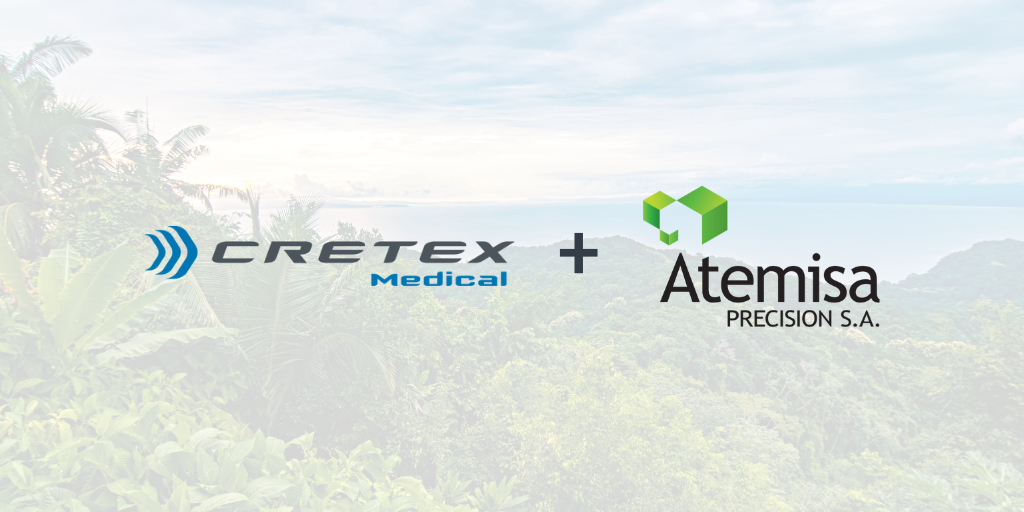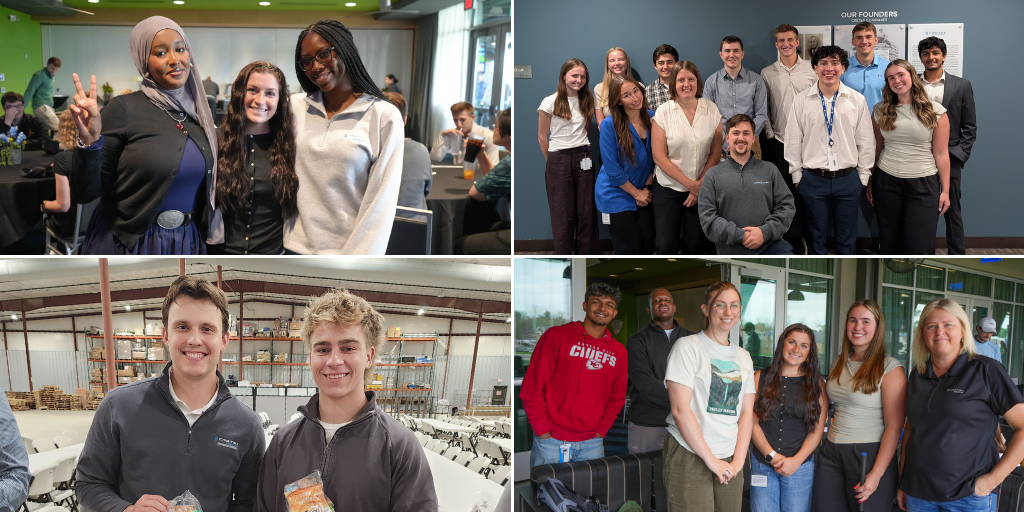Navigating Current Challenges with Sterilization Capacity Constraints
In recent years, the medical device industry has faced growing sterilization capacity constraints. The primary causes are increased scrutiny of ethylene oxide (EO) sterilization due to emissions and supply issues with cobalt-60 used in gamma sterilization.
by Cretex Medical | QTS | June 17, 2024
Cretex Medical | QTS's Senior Sterilization Scientist, Molly Swanson, and Principal Sterilization Scientist, Sopheak Srun were featured in BONEZONE Magazine.
In recent years, the medical device industry has experienced sterilization capacity constraints that are continuing to grow every day. The capacity constraints can be attributed to many factors, but the most impactful are increased scrutiny of ethylene oxide (EO) sterilization due to emissions and supply issues with the cobalt-60 used in gamma sterilization.
Approximately 50% of medical devices are sterilized by EO, approximately 40% are sterilized with gamma, and the remaining 10% are sterilized with other modalities, including electron beam (e-beam), x-ray, moist heat, vaporized hydrogen peroxide, and other novel technologies. As such, capacity constraints related to EO and gamma sterilization can have a significant impact on the medical device supply chain and access to life-saving devices.
Causes of Capacity Constraints
A significant shift related to EO sterilization capacity began in 2018, with the closure of several industrial EO sterilization facilities due to scrutiny surrounding emission levels. Subsequently, the U.S. Environmental Protection Agency (EPA) identified a list of about two dozen high-risk EO sterilization facilities. While EO gas is a very effective sterilization agent, it damages the DNA of microorganisms on medical devices. This same mode of action makes it a carcinogen, hence the need for more stringent EO emission requirements. In March 2024, the EPA posted the final rule for emissions: National Emission Standards for Hazardous Air Pollutants (NESHAP). This final rule sets emission limits, operating limits, and guidelines for management practices of EO sterilization facilities to protect public health. These events and the new rule have caused a cascade of changes and costly improvements for sterilization facilities. Already at-capacity sterilizers that need to upgrade emissions equipment and implement requirements to use less EO have stressed the industry.
Additionally, the gamma sterilization industry has experienced issues related to the supply of cobalt-60 (Co-60), a radioactive isotope of cobalt and the source used for gamma irradiation. Co-60 has various uses in industrial applications and the medical field; however, approximately 80% of the Co-60 supply is used to sterilize medical devices. To produce Co-60, Co-59 is mined and a nuclear reactor activates the cobalt to Co-60. This process takes roughly 18-60 months. Suppliers then process the Co-60 into a C-188 Co-60 source, which is the industry standard. There are a limited number of Co-60 producers and a reduction in the production capacity of Co-60, along with global supply chain issues and increased demand for gamma sterilization, has caused strain on processing capacity.
With capacity issues impacting EO and gamma sterilization — the two most utilized sterilization methods for medical devices — the medical device industry has recognized that preparation and planning is essential to reduce interruptions in the sterile medical device supply.
Industry-Wide Efforts
This is an extremely complex issue that requires significant time and resources to address, and fortunately there are several industry collaborative communities in place that have been working to tackle different aspects of the problem. These collaborative communities involve a wide range of functions that include sterilization scientists, packaging engineers, R&D engineers, biocompatibility, supply chain, quality, and regulatory. This also involves a range of organizations, including medical device manufacturers, sterilization facilities, testing laboratories, regulators, and notified bodies.
The core questions being tackled by these collaborative communities include:
- How can we reduce the amount of EO used in our sterilization cycles without compromising patient safety?
- How do we reduce our overall dependence on EO and gamma sterilization, and how do we remove the barriers that prevent the use of other sterilization modalities?
A number of the collaborative communities that are actively working to address these core questions were formed through the Kilmer Conference, a prestigious, invite-only meeting that focuses on innovation and advancement in terminal sterilization and aseptic processing. While this conference is used as a venue for sharing knowledge, an equally important focus is to build connections and foster an environment for attendees to use what they have learned and work with others to take action.
The Kilmer Modalities Team is one of the key collaborative communities formed through the Kilmer Conference that has been tackling issues related to sterilization capacity. While this team was initially formed to tackle the challenges related to process optimization and to address the barriers to the use of alternative sterilization modalities, this team has largely focused its efforts on addressing one of the primary obstacles for changing between sterilization modalities: understanding material compatibility.
So far these efforts have directly translated into a major revision of AAMI TIR17, Compatibility of materials subject to sterilization, which is nearing a final draft stage. This document is a valuable resource that is meant to serve as a starting point for engineers who want to select materials and design products that are compatible with sterilization. The new edition of AAMI TIR17 will add information on material compatibility with chlorine dioxide sterilization and expand on the guidance for addressing material compatibility when changing sterilization processes or modalities. A key difference with this new edition is that the revision process has involved significantly greater participation by material scientists, who have provided significant improvements in the overall quality of the guidance.
Another recent related development from the standards world is the publication of AAMI TIR104:2022, Guidance on transferring health care products between radiation sterilization sources. The need for this guidance document stems from efforts to reduce dependence on gamma sterilization, which can be achieved by transferring products to e-beam or x-ray sterilization. In particular, this guidance document focuses on the physical and chemical aspects associated with transferring products between radiation sources. This document provides an in-depth discussion on the physical differences between gamma, e-beam, and x-ray, and how each modality impacts materials on the molecular level. With this information, engineers responsible for evaluating product functionality can determine what testing, if any, might be necessary when transferring products from one radiation source to another.
Being able to easily transfer products from gamma to e-beam or x-ray would not do much good if there are supply chain limitations in the availability and capacity of these sterilization facilities. While there are several sterilization service providers actively working to build x-ray sterilization facilities, some of the biggest hurdles associated with e-beam and x-ray sterilization have to do with the size, complexity, cost, and power efficiency of accelerators. Fermilab has been working on developing a much more compact accelerator that would be cost effective and would enable small- and mid-sized companies to do in-house e-beam and x-ray sterilization. As part of their efforts, Fermilab has also been hosting an annual medical device sterilization workshop that brings together stakeholders from across the medical device value chain. This workshop aims to address the barriers that make it a challenge to transfer products from one radiation source to another, including education, regulatory barriers, material compatibility, and dose mapping.
A focus of Fermilab’s workshop has been virtual dose mapping, which is a new technology that promises to revolutionize the sterilization industry. Virtual dose mapping uses product and packaging CAD models along with validated Monte Carlo simulation software to determine optimal product and packaging orientations for sterilization and can predict expected doses. While dose mapping still needs to be performed on the actual product at the radiation facility, virtual dose mapping can significantly reduce R&D time and the costs associated with bringing a product to market, particularly for e-beam sterilization.
Several other novel or less common sterilization modalities are available, and one of the primary barriers preventing their widespread use has been a lack of internationally recognized consensus standards. A recently published standard in this area is ISO 22441:2022, Sterilization of health care products — Low temperature vaporized hydrogen peroxide — Requirements for the development, validation and routine control of a sterilization process for medical devices. Early discussions are also taking place within the AAMI Sterilization Standards Committee about developing a series of guidance documents on transferring products between sterilization modalities that would be modeled after AAMI TIR104.

Doing Our Part to Address Sterilization Capacity
Cretex Medical | QTS has implemented strategies to mitigate sterilization facility capacity constraints. First and foremost, Cretex Medical | QTS has launched a pre-validated EO cycle called QSTERILE®. While traditional EO validations can be very costly and take significant time, a lot of the legwork for the QSTERILE® validation is already done. Because only product-specific elements of the validation need to be conducted, QSTERILE® can cut the EO validation timeline by more than half. This ensures a validated sterilization process while offering significant cost reductions in comparison to a full EO validation.
There are several ways to validate an EO cycle. The half cycle overkill approach, which typically uses a high concentration EO cycle and achieves a conservative sterility assurance level (SAL), has been popular due to its high validation success rate, saving time and resources. However, a drawback of this method is the use of higher amounts of EO given the heightened scrutiny of emission levels. QSTERILE® uses the cycle calculation approach combined with a low concentration EO cycle. This reduces EO emissions without requiring longer cycle times, which helps to prevent a further exacerbation of capacity issues while still ensuring a safe and sterilized product.
To mitigate the risk of supply chain bottlenecks, Cretex Medical | QTS also encourages customers to qualify multiple sterilization modalities when possible. Switching modalities after initial validation is more challenging due to material compatibility concerns, costs, regulatory considerations, and time. However, planning for this up front can significantly reduce unexpected costs and effort.
Three modalities are used for radiation-sterilized medical devices: gamma, e-beam, and x-ray. QTS advises customers to validate at least two modalities and to use multiple facilities, if possible. The peer-reviewed journal article “Radiation Sterilization: Dose is Dose” (Industrial Sterilization: Process Optimization and Modality Changes, Summer 2020) and the publication of AAMI TIR104:2022 has made it easier to validate multiple radiation sterilization modalities up front from a sterilization perspective, although regulatory and other requirements apply and must still be considered. The largest challenge with switching radiation modalities and/or facilities is completing product dose mapping. Virtual dose mapping, which QTS is exploring, can help reduce this burden.
We have also explored other sterilization modalities — such as vaporized hydrogen peroxide, nitrogen dioxide, and other novel technologies — and have found that many lack enough supply chain capacity to be viable options for our present needs, especially for higher-volume products. The increased amount of time needed to validate these processes and obtain regulatory approvals is also a significant barrier. However, we are continuing to monitor advances in these technologies, and for many of our customers it is still worth exploring them as alternative sterilization options.
In addition to using validation strategies to mitigate the risk of potential sterilization facility capacity issues, we are also working with customers to encourage the maximization of chamber utilization through better planning of production orders. As chamber availability continues to drop, we are more actively monitoring chamber usage and available chamber capacity with suppliers.
We know that the rapidly evolving regulatory environment and the multidisciplinary nature of sterilization can present daunting challenges. That is why Cretex Medical | QTS considers these issues a priority and puts significant investments into this area. We bring together our supply chain team and subject matter experts across multiple disciplines to ensure that the right people are well versed in these issues and are engaged in industry efforts. When you work with Cretex Medical | QTS you will have confidence that our experts will be with you to make it easier to get your products to patients.
Authors:
Molly Swanson, CISS-EO, CISS-RAD, Senior Sterilization Scientist, Cretex Medical | QTS
Sopheak Srun, CISS-EO, CISS-RAD, SM(NRCM), Principal Sterilization Scientist, Cretex Medical | QTS
This article originally appeared on BONEZONE's website.



